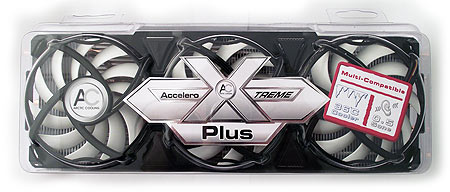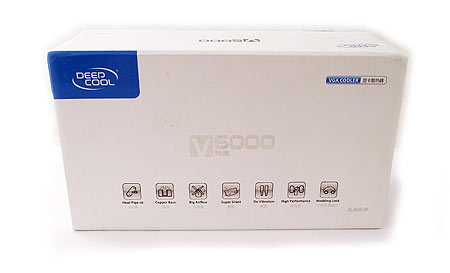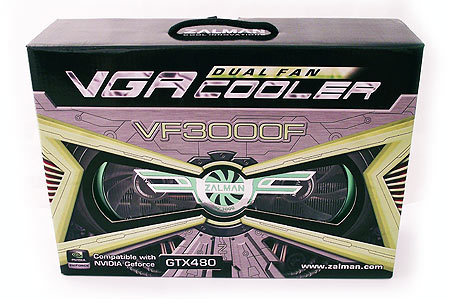Three Aftermarket Graphics Coolers On GeForce GTX 480
Today we're testing three of the largest graphics card coolers available: Arctic Cooling's Accelero XTREME Plus, DeepCool's V6000, and Zalman's VF3000F. Can these products bring performance to the table commensurate with their large triple-slot size?
Conclusion: When It Comes To GPU Cooling, Bigger Is Better
All of these coolers are impressive when compared to Nvidia's reference model. Let’s not forget that we’re testing them on the GeForce GTX 480, a card that comes equipped with the largest and hottest GPU available. Folks who plan to use these coolers on cards like the Radeon HD 5800-series will see even lower load temperatures. With impressive thermal and noise performance, how could we complain about these monster VGA coolers?
Well, none of them are perfect. There are two main drawbacks tied to these mammoth aftermarket upgrades: price and size. The buy-in is significant, ranging between $50 and $75 USD, depending on the model. On high-end cards, this is a smaller percentage of the total cost, but on mid-range cards like the GeForce GTX 460 or Radeon HD 5850, that price will almost always bridge the gap to a more capable solution. As for size, all of these monster specimens take up three expansion slots, meaning that users intending to run a CrossFire or SLI setup will need to be careful about the motherboards they choose.
But the enthusiasts most interested in coolers like these desire silent operation and strong enough cooling performance to look past the price and inconveniences (something the GeForce GTX 480 didn't exactly offer out of the box). Power users willing to pay for the best graphics cooling available will be quite satisfied with the performance provided by some of the models we’ve looked at today.
Arctic Cooling Accelero XTREME Plus
Arctic Cooling’s entry demonstrates some of the best cooling performance and noise characteristics we’ve seen from an aftermarket heatsink and fan combination. The ~$70 price tag is high, but the hardware is capable.
While we’re not super excited about gluing heatsinks to graphics cards, for most users, this probably isn’t much of an issue. We're swapping hardware in and out all of the time, but most folks will install the Accelero one time and leave it there. Thermal tape is also an option if the user isn’t happy with glue. It’s also noteworthy that the Accelero XTREME Plus is the only cooler in the roundup capable of plugging in to the graphics card’s onboard fan header, an ability that doesn’t sound like much, but allows the fan to be controlled by graphics card software.
DeepCool V6000
Get Tom's Hardware's best news and in-depth reviews, straight to your inbox.
The V6000 is not yet available in the US, the test sample came with defective thermal tape, and it will probably cost somewhere around $60 if it ever arrives.
The good news is that the company claims that the thermal tape problem is fixed for the mass production version, and the actual hardware is quite capable of handling hot GPUs like GeForce GTX 480. We do think the $60 MSRP is a little high compared to its competitors, but if the street price ends up being lower the V6000 might be an attractive option for folks who want improved noise and thermals but aren’t willing to spend ~$70 on an aftermarket VGA cooler. With that said, DeepCool has some work to do on the distribution of its product first.
Zalman VF3000F
The Zalman VF3000F demonstrates cooling performance on par with Arctic Cooling’s solution, but without adhesives of any kind, with user-adjustable fan control, and laden with far less weight than its competitors. One downside is that the VF3000 models are specific, and can't be used on one graphics card today and another tomorrow. But this is no worse than the Accelero XTREME Plus, with its permanent thermal adhesive.
Some users might prefer a fan solution that plugged into the graphics card, rather than requiring a header on the motherboard. Fortunately, while the VF3000F might cost ~$70 (and will soon be rendered less relevant by a new flagship from Nvidia that won't be PCB-compatible), the VF3000A and VF3000N can be had for under $50, which is a real steal for such a well-built aftermarket cooler.
Current page: Conclusion: When It Comes To GPU Cooling, Bigger Is Better
Prev Page Benchmark Results: OverclockingDon Woligroski was a former senior hardware editor for Tom's Hardware. He has covered a wide range of PC hardware topics, including CPUs, GPUs, system building, and emerging technologies.
-
AMW1011 Wow, I can't believe the Accelero and the Zalman were basically neck and neck, with no tangible victory in cooling. I always thought the Accelero would be better, but Zalman actually pulled this one off.Reply
However, what would be AMAZING, is to have a follow-up to see which of these two solutions work best in SLI, assuming EITHER work well in SLI. I think that is the big question, especially since we never expected bad temps.
Also can you please add the voltages used for each overclock? It might give people, especially stock GTX 480 owners, a better idea of what these can handle, since cards will always vary when overclocking.
Holy ***, stock voltages! That is crazy! Please post up your VID (stock voltage) for us. Either you have a golden GTX 480, or the VID is a lot higher than it needs to be, which is pretty common.
Great article, I love to see these kind of side articles/reviews, and it was well done. -
Nerdbox87 Given that this entire article is based on cooling you really should have included all GPU temps - as vram / vrm cooling may be the difference between the Accelero and the Zalman (as I know my Accelero Twin Turbo on a 5850 struggled with vram temps in Furmark)Reply
On this my guess would be the Zalman would smash it -
joytech22 How was the 480 at just under 60C when my 470's are always idling at 86C in a Antec twelve hundred..?Reply
I mean sure this case isn't the best cooling case but there's never really much hot air in the case and with a sidepanel fan blowing on the two cards i just cant see how.
Unless.. you guy's test in a cool room at about 15-20C or the fan speeds are maxed 100% of the time. -
dvijaydev46 Oh, Zalman's cooler looks weaker than Accelero but the later actually outperforms a bit. That's amazing.Reply -
Th-z Don, what is your view on how to apply thermal paste. There are numbers of ways people talk about: a pea in the middle, several peas, line in the middle, several lines, and old school spread method. You use spread method when you apply the RAM/VRM sink on Zalman, I presume you use the same method on other parts, too. Maybe Tom can do a comparison test on different ways of applying thermal paste.Reply -
compton These look good and would help me out quite a bit with a 465/470, but I wish I could get them in a design that would help maintain the existing footprint. My GF100 doesn't run quite as hot as some reference card designs, but that sure as hell doesn't mean that I'm happy with the leaf blower lurking in my case. Maybe I find a way to make the Zalman work.Reply -
avatar_raq I think the Zalman one wins here. It performs slightly better, costs slightly less, weighs less and is shorter than the Arctic cooler. As for noise they're trading blows. Being shorter, the VF3000 does not increase the length of the GTX 480, unlike the accelero which may theoretically cause incompatibility with some cases. Being lighter, it strains the PCB much less. The fact it performed so close to the Arctic cooler with only 2 fans surprised me.Reply


